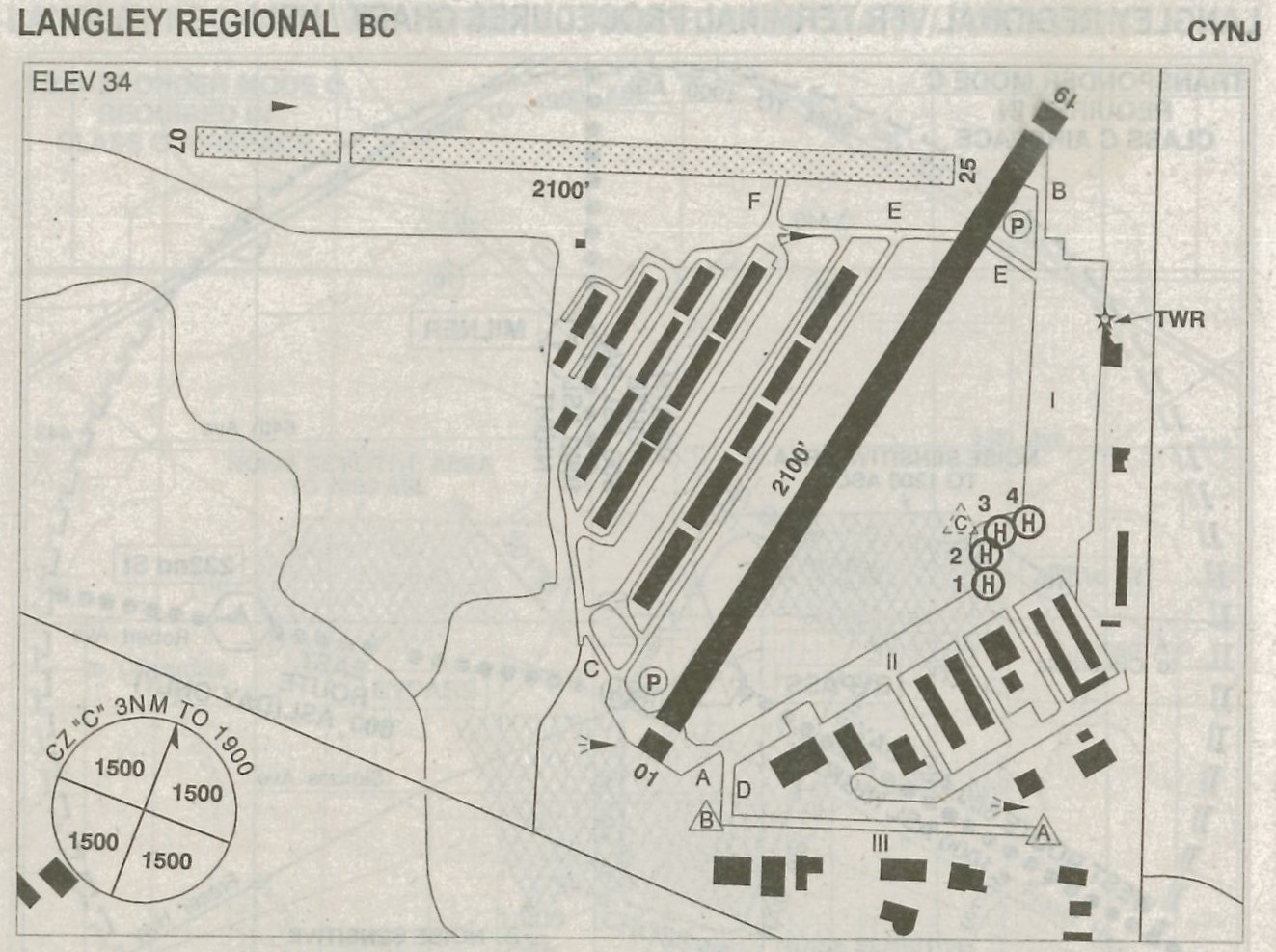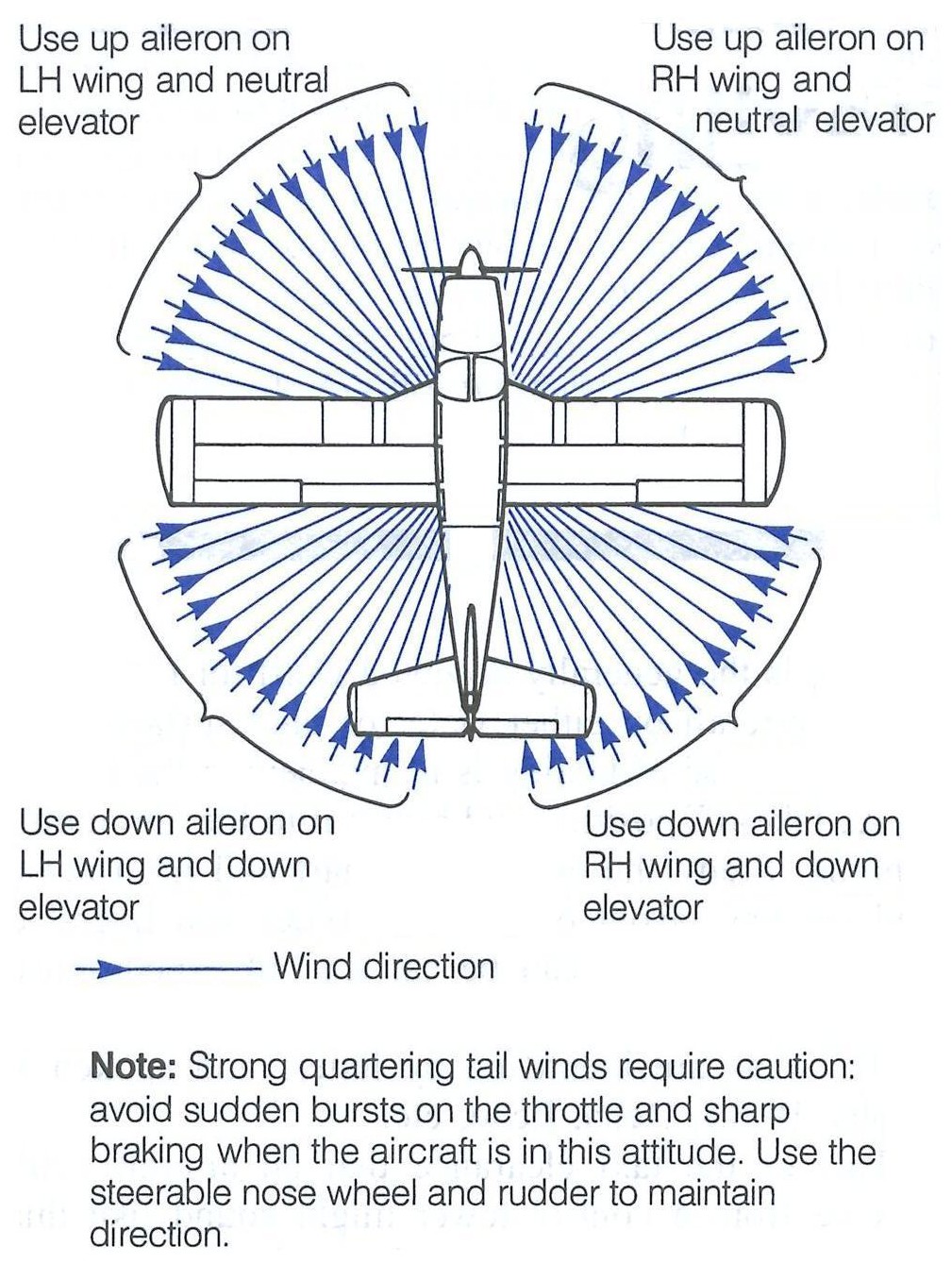TAXIING
Aim
Students must demonstrate the ability to manoeuvre the aircraft safely and avoid unnecessary interference with the movement of other traffic.
Description
You must demonstrate that you are taxiing the aircraft in a fashion that is safe with respect to persons and property. Special consideration is given to proper control surface positioning with respect to wind conditions during taxi; if the winds are calm, the Examiner will specify wind speed and direction in order to test your ability. You are expected to taxi along the taxiway centreline where conditions permit. During the taxi, you must demonstrate your ability to conduct a test to ensure the proper functioning of the flight instruments.
Performance Criteria
Private Pilot Students must:
- perform a brake check;
- safely manoeuvre the aeroplane, considering other traffic on aprons and manoeuvring areas;
- use appropriate taxiing speeds;
- adhere to local taxi rules, procedures and Air Traffic Control clearances and instructions;
- use flight controls and brakes correctly;
- identify and correctly interpret airport, taxiway and runway signs, markings and lighting;
- after landing, clear the runway/landing area and taxi to suitable parking/refuelling area;
- park the aeroplane properly, considering the safety of nearby persons or property.
Commercial Pilot Students must:
- perform a brake check;
- demonstrate proficiency by maintaining correct and positive aeroplane control.
- safely manoeuvre the aeroplane, considering other traffic on aprons and manoeuvring areas;
- use appropriate taxiing speeds;
- maintain proper spacing from other aeroplanes, obstructions and persons;
- adhere to local taxi rules, procedures and Air Traffic Control clearances and instructions;
- confirm the proper functioning of the flight instruments;
- accomplish the applicable checklist items and perform recommended procedures;
- identify and correctly interpret airport, taxiway and runway signs, markings and lighting;
- after landing, clear the runway/landing area and taxi to suitable parking/refuelling area;
- maintain constant vigilance and aeroplane control during taxi operation;
- park the aeroplane properly, considering the safety of nearby persons or property.

Discussion
Prior to taxi, be sure you listen to and copy down the ATIS, if available. If an ATIS is available, be sure you advise the ground controller that you have the ATIS (using the ATIS identifying letter). The altimeter should be adjusted to the current altimeter setting, or the airport elevation, if an ATIS does not exist. If an ATIS is broadcast, be sure to enter the altimeter setting immediately—don’t defer it or you may forget.
When taxiing at an uncontrolled airport, a broadcast should be made on the proper frequency stating intentions: “Langley Traffic this is Piper Cherokee ABCD at Hangar 4B, taxiing to hold short of the Runway 19.”1 If the airport is controlled, be sure you properly obtain a taxi clearance: “Langley Ground, this is Piper Cherokee ABCD, Hangar 4B, with information Bravo, Taxi, training flight to the north-west.”
You must check the aircraft brakes when you begin your taxi. In is not uncommon to have brake problems on aircraft.2 You do not have to screech the aircraft to a stop to prove that the brakes are still working; instead, smoothly apply brakes and bring the aircraft to a full stop, and then apply strong brake pressure up the hydraulic system. If the brakes are malfunctioning, the foot pedal will not pressure-up.
You must demonstrate the proper use of power (just enough to start the aircraft moving) and brakes (to be used only when necessary). Be conscious of your taxi speed—the line used is that an aircraft should be taxied no faster than the speed of a “brisk walk.”
Throughout the taxi, you must demonstrate the proper use of aileron and elevator/stabilator deflection for winds. When the wind is coming from your rear, you should say “Forward and away” or “Dive away,” indicating that you push the control column forward and deflect the ailerons as if turning way from the wind. If the winds are coming from the front, you should say “Neutral and into,” indicating that you hold the control column in the stabilator-neutral position and deflect the ailerons as if turning into the wind.

Also, during the taxi roll complete an instrument roll check. During slow and controlled turns left and right, perform the following checks: “Turn Left, Ball Right (turn co-ordinator), Decreasing (heading indicator), Steady (attitude indicator), Free and Turning (compass)—Turn Right, Ball Left, Increasing, Steady, Free and Turning.” Your instructor will not expect you to perform the roll check when you are still just learning how to taxi—many pilots feel, incidentally, that taxiing is more difficult than flying!—but the roll check must be something you do automatically before you go to flight test.
Flight Safety
- Ensure the brakes are checked to ensure proper functioning before taxiing.
- Keep taxi speed slow and safe.
References
1 Assuming it is apparent Runway 19 is active runway. You should nevertheless broadcast your chosen runway so that you will be heard by others who might be using a different runway. Note also the use of “hold short”—this provides added assurance to those in the air that you will not be entering an active runway. Where multiple runways exist in an uncontrolled environment—such as is the case with Victoria Airport when the Control Tower is closed—provide progressive series of broadcasts indicating your intention to taxi short of runways you intend to cross: “Victoria Traffic, Piper Cherokee ABCD at the Victoria Flying Club, taxiing (taxiway) Sierra and (taxiway) Echo for Runway 09, holding short Runway 02 . . . (and later) . . Victoria Traffic, ABCD crossing 02 at E, to hold short Runway 31 . . (again, later) . . Victoria Traffic, ABCD crossing Runway 31 at (taxiway) Echo, to hold short Runway 09.” For reference, you may want to examine the map of Victoria Airport in the Canada Flight Supplement, and this routing will make more sense (note the Victoria Flying Club is located next to the Control Tower.
2 It wasn’t that long ago that a Cessna 150 got away from a student from a neighbouring school during the initial taxi. The student could not slow to make the turn onto the taxiway. To the student’s credit, the mixture was immediately set to idle cut-off. The wing of the Cessna struck the wing of another Cessna parked in the tie-downs, but at least there wasn’t a propeller strike.
.jpg)

